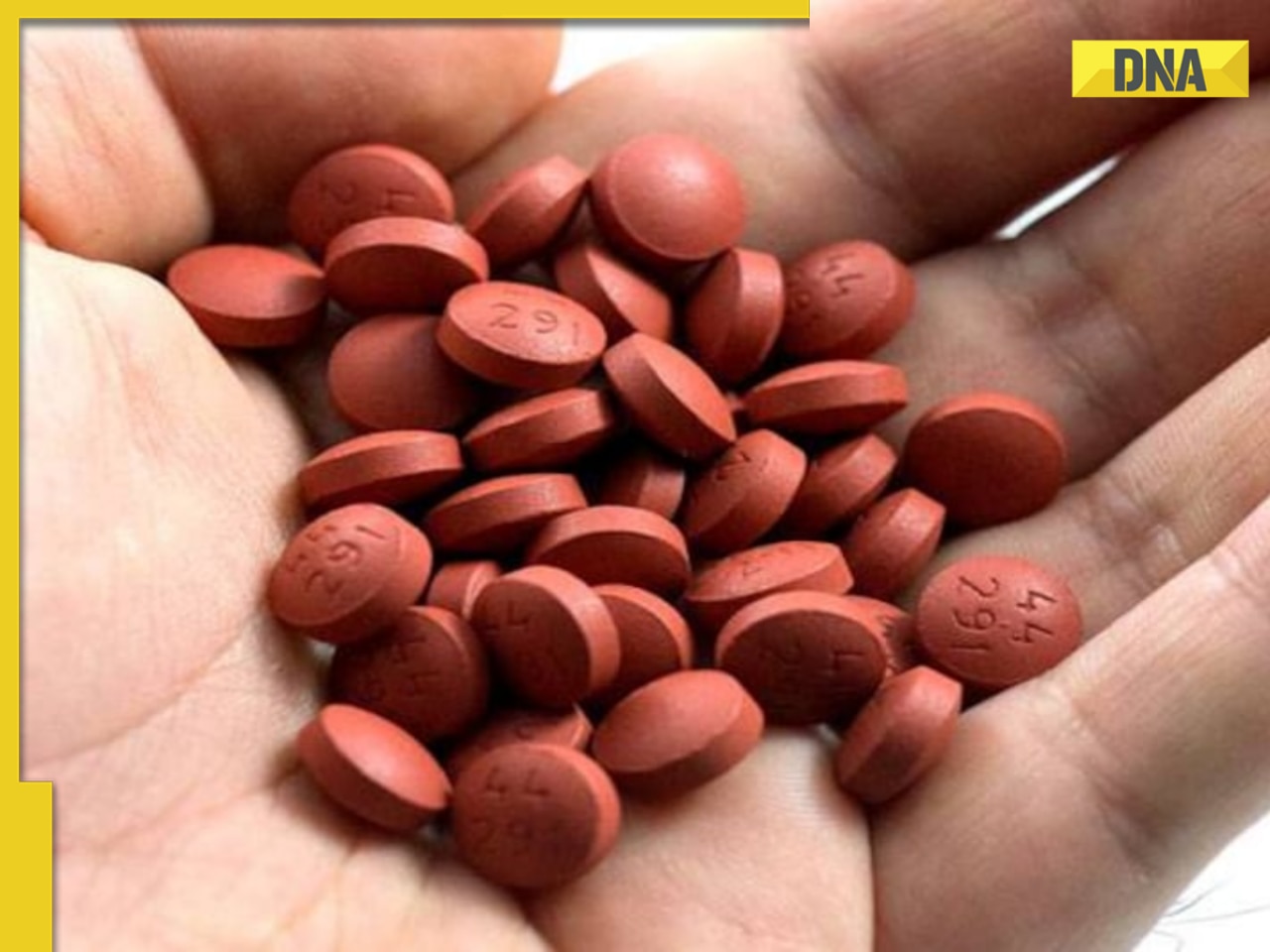Here, take a look at some of the signs and symptoms of diabetes that can appear on your skin.
Diabetes is a condition in which your blood sugar level remains high. It occurs when the pancreas cannot produce enough insulin or the body cannot effectively use the released insulin. According to the World Health Organisation (WHO), 14% of adults aged 18 years and above suffered from diabetes in 2022.
When you know the symptoms of diabetes, it becomes easier to diagnose and treat problems. Diabetes symptoms can show up in many ways on your body, including on your skin. Here, take a look at some of the signs and symptoms of diabetes that can appear on your skin.
Dry, itchy skin
When blood sugar levels rise, your kidneys work harder to flush out excess glucose from the blood. This can lead to dehydration, which causes your skin to become dry and itchy. Your skin may also feel dry or flaky, especially on the legs, arms, or hands.
Slow-healing wounds
High blood sugar levels can affect the body's ability to heal wounds and cuts. If you find that minor scrapes, cuts or bruises are taking longer than usual to heal, it could be a sign of high blood sugar. This is because high glucose levels can affect blood circulation and the immune system.
Frequent skin infections
High blood sugar can weaken the immune system, making it easier for bacteria and fungi to spread infection. You may have frequent skin infections, especially fungal infections such as athlete's foot or yeast infections.
Dark patches of skin
Another obvious sign of high blood sugar on your skin is the appearance of dark, velvety patches on the skin, usually around the neck, armpits or groin. This is due to insulin resistance and can be a sign of type 2 diabetes.
Red or swollen skin
High blood sugar can cause inflammation in the body, which can show up as redness, swelling or irritation on the skin. You may notice swelling in some parts of your skin, especially in areas that are more prone to infection, such as the legs or armpits.
Also read: Uric acid levels too high? Know the causes, symptoms and ways to control
Find your daily dose of All
Latest News including
Sports News,
Entertainment News,
Lifestyle News, explainers & more. Stay updated, Stay informed-
Follow DNA on WhatsApp. Germany: 3 killed, several injured as passenger train derails, here's what we know so far
Germany: 3 killed, several injured as passenger train derails, here's what we know so far 'Yeh toh Aishwarya Rai ki judwaa bhen nikli': Meet Aamna Imran, Pakistani doppelganger of Bollywood star, stunned internet with resemblance
'Yeh toh Aishwarya Rai ki judwaa bhen nikli': Meet Aamna Imran, Pakistani doppelganger of Bollywood star, stunned internet with resemblance Saiyaara box office collection day 10: Aneet Padda, Ahaan Panday score 2nd highest-grossing Bollywood film of 2025, crosses Rs 350 crore
Saiyaara box office collection day 10: Aneet Padda, Ahaan Panday score 2nd highest-grossing Bollywood film of 2025, crosses Rs 350 crore Laughter Chefs Season 2 grand finale: Elvish Yadav, Karan Kundrra lift the winner's trophy, beat season's favourites Aly Goni, Reem Shaikh
Laughter Chefs Season 2 grand finale: Elvish Yadav, Karan Kundrra lift the winner's trophy, beat season's favourites Aly Goni, Reem Shaikh WTC 2025-27 points table: Updated World Test Championship standings after India vs England 4th Test ends in a draw
WTC 2025-27 points table: Updated World Test Championship standings after India vs England 4th Test ends in a draw 7 stunning images of Galactic 'Fossil' captured by NASA
7 stunning images of Galactic 'Fossil' captured by NASA Other than heart attacks or BP : 7 hidden heart conditions triggered by oily foods
Other than heart attacks or BP : 7 hidden heart conditions triggered by oily foods 7 most captivating space images captured by NASA you need to see
7 most captivating space images captured by NASA you need to see AI-remagined famous Bollywood father-son duos will leave you in splits
AI-remagined famous Bollywood father-son duos will leave you in splits 7 superfoods that boost hair growth naturally
7 superfoods that boost hair growth naturally Tata Harrier EV Review | Most Advanced Electric SUV from Tata?
Tata Harrier EV Review | Most Advanced Electric SUV from Tata? Vida VX2 Plus Electric Scooter Review: Range, Power & Real-World Ride Tested!
Vida VX2 Plus Electric Scooter Review: Range, Power & Real-World Ride Tested! MG M9 Electric Review | Luxury EV with Jet-Style Rear Seats! Pros & Cons
MG M9 Electric Review | Luxury EV with Jet-Style Rear Seats! Pros & Cons Iphone Fold: Apple’s iPhone Fold Could Solve Samsung’s Biggest Foldable Problem | Samsung Z Fold 7
Iphone Fold: Apple’s iPhone Fold Could Solve Samsung’s Biggest Foldable Problem | Samsung Z Fold 7 Trump News: Congress Seeks Answers On Trump's Alleged Mediation In Operation Sindoor
Trump News: Congress Seeks Answers On Trump's Alleged Mediation In Operation Sindoor Elon Musk's Optimus gets tough competition, Chinese company unveils athletic humanoid robot, costs Rs...
Elon Musk's Optimus gets tough competition, Chinese company unveils athletic humanoid robot, costs Rs... Bad news for TCS employees, Ratan Tata's company to lay off these many workers: 'One of the toughest decisions'
Bad news for TCS employees, Ratan Tata's company to lay off these many workers: 'One of the toughest decisions' Amazon announces Great Freedom Sale, get up to 80 per cent discounts on..., check date here
Amazon announces Great Freedom Sale, get up to 80 per cent discounts on..., check date here  6 major rules changing from August 1, 2025: How they will impact your pocket
6 major rules changing from August 1, 2025: How they will impact your pocket THIS rival company of Elon Musk's Tesla EV launches its first ever showroom in Surat, Gujarat, its premium models are...
THIS rival company of Elon Musk's Tesla EV launches its first ever showroom in Surat, Gujarat, its premium models are... From Queen to Cocktail: 5 Bollywood films that help you heal after a breakup
From Queen to Cocktail: 5 Bollywood films that help you heal after a breakup Meet 5 brilliant Indian teens who built multi-crore startups before turning 20
Meet 5 brilliant Indian teens who built multi-crore startups before turning 20 Chef Sanjeev Kapoor shares 3 affordable tomato substitutes for Indian dishes
Chef Sanjeev Kapoor shares 3 affordable tomato substitutes for Indian dishes Bollywood friendships that rewrote the rules of 'ladka-ladki kabhi dost nahi ho sakte'
Bollywood friendships that rewrote the rules of 'ladka-ladki kabhi dost nahi ho sakte' From Vicky-Katrina to Alia-Ranbir: 5 Bollywood stars who proved crushes can turn into real-life marriages
From Vicky-Katrina to Alia-Ranbir: 5 Bollywood stars who proved crushes can turn into real-life marriages Taking this common acidity medicine? India's top drug regulator says it may cause cancer, orders probe
Taking this common acidity medicine? India's top drug regulator says it may cause cancer, orders probe Parliament Monsoon Session: Lok Sabha to discuss 'Op Sindoor' tomorrow, PM Modi likely to be present
Parliament Monsoon Session: Lok Sabha to discuss 'Op Sindoor' tomorrow, PM Modi likely to be present  PM Modi's BIG statement on 'Operation Sindoor', says, 'No safe heaven for India's enemies and...'
PM Modi's BIG statement on 'Operation Sindoor', says, 'No safe heaven for India's enemies and...' Massive row over IND vs PAK Asia Cup clash months after Operation Sindoor: 'Stop profit over blood...'
Massive row over IND vs PAK Asia Cup clash months after Operation Sindoor: 'Stop profit over blood...' This state has highest number of Vande Bharat trains running, not Bihar, West Bengal, Uttar Pradesh, Rajasthan, it is...
This state has highest number of Vande Bharat trains running, not Bihar, West Bengal, Uttar Pradesh, Rajasthan, it is... Meet IAS Ansar Shaikh's wife, who is as beautiful as Bollywood actress, is popular on social media, she works as...
Meet IAS Ansar Shaikh's wife, who is as beautiful as Bollywood actress, is popular on social media, she works as... IIM CAT 2025 notification released at iimcat.ac.in, know registration process, exam date, other details
IIM CAT 2025 notification released at iimcat.ac.in, know registration process, exam date, other details RRB ALP EXAM 2025 Update: Notification on re-conduct Of CBAT released; all you need to know
RRB ALP EXAM 2025 Update: Notification on re-conduct Of CBAT released; all you need to know CBSE class 10th, 12th Supplementary Result 2025 to be released at cbse.gov.in, know how to download, other details
CBSE class 10th, 12th Supplementary Result 2025 to be released at cbse.gov.in, know how to download, other details  After IAS Jagrati Awasthi, marksheet of UPSC topper AIR 3 Donuru Ananya Reddy goes viral, she scored highest in...
After IAS Jagrati Awasthi, marksheet of UPSC topper AIR 3 Donuru Ananya Reddy goes viral, she scored highest in... Maruti Suzuki's e Vitara set to debut electric market at Rs..., with range of over 500 km, to launch on...
Maruti Suzuki's e Vitara set to debut electric market at Rs..., with range of over 500 km, to launch on... This is world’s most expensive wood, cost of 1kg wood is more than gold, its name is..., is found in...
This is world’s most expensive wood, cost of 1kg wood is more than gold, its name is..., is found in... This luxury car is first choice of Indians, even left BMW, Jaguar, Audi behind in sales, it is...
This luxury car is first choice of Indians, even left BMW, Jaguar, Audi behind in sales, it is... Kia India unveils Carens Clavis: Check features, design changes, price and more; bookings open on...
Kia India unveils Carens Clavis: Check features, design changes, price and more; bookings open on... Tesla CEO Elon Musk launches most affordable Cybertruck, but it costs Rs 830000 more than older version, it is worth Rs...
Tesla CEO Elon Musk launches most affordable Cybertruck, but it costs Rs 830000 more than older version, it is worth Rs...




)
)
)
)
)
)
)
)
)
)
)
)
)
)
)
)










